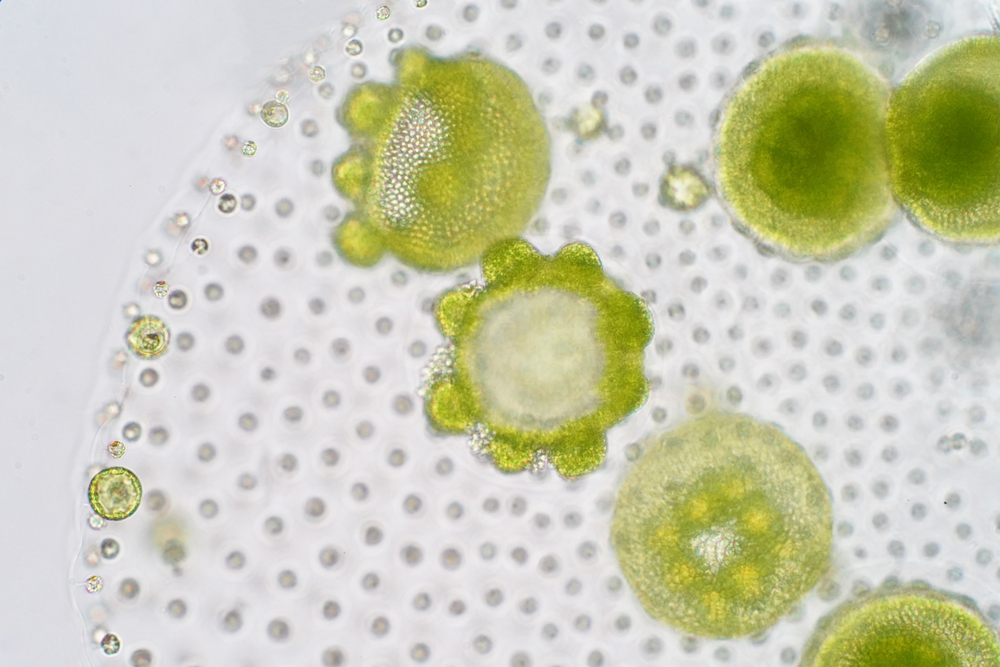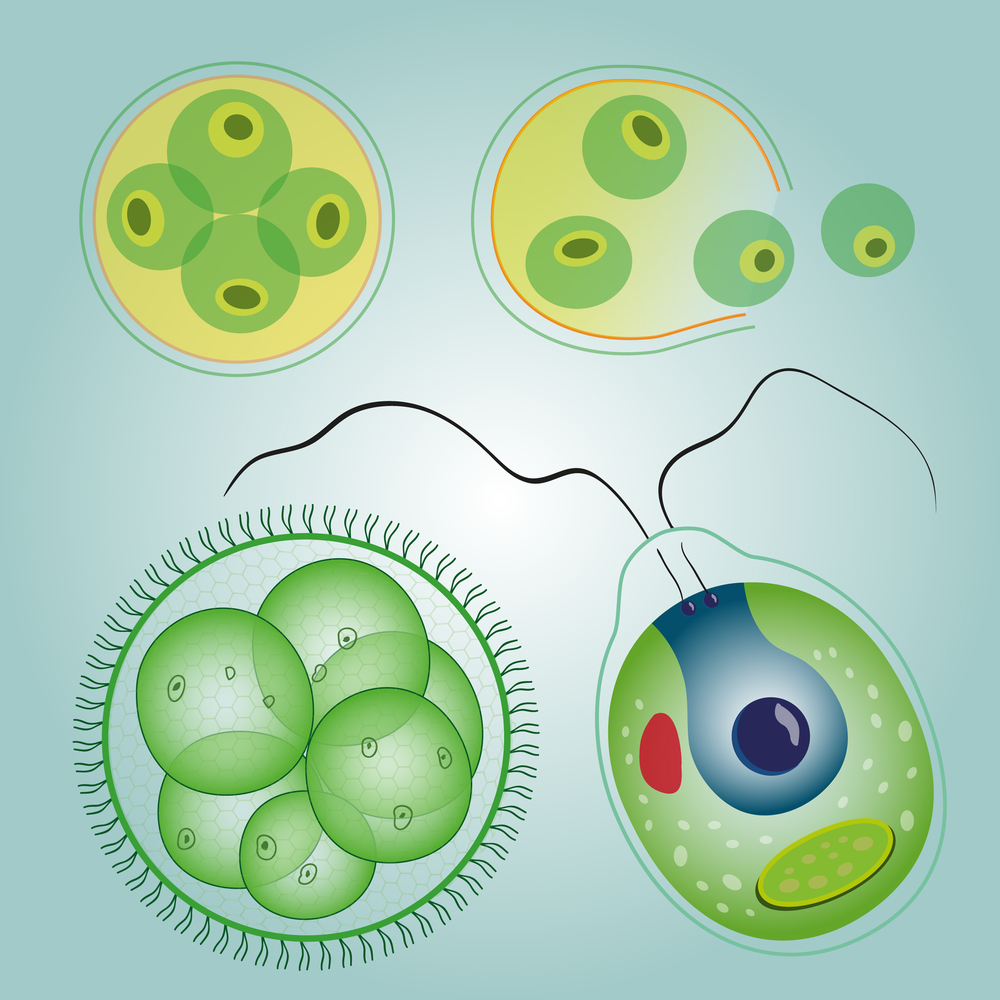Does pond water hold a microscopic key to understanding evolution? Examining pond water with a microscope in 1674, Anton van Leeuwenhoek observed many single-celled organisms, which he called ‘animalcules’. Some formed colonies or clusters, others were clearly multi-cellular, and one of these is a tiny green alga called Volvox. So, could this tiny creature be a microscopic key unlocking evolution’s mystery?

Volvox – the ‘fierce roller’
Volvox is a spherical multicellular green alga, containing many small biflagellate body cells and a few large, non-motile reproductive cells called gonidia. As a result, swimming with a characteristic rolling motion, its name is ‘the fierce roller’ or Volvox.
Living organisms are made of cells
Imagine the thrill. None of these microscopic animals could be seen with the naked eye. The microscope revealed another living world. This was like landing on another planet. Microscopic life forms, changing our view of life on earth. For, such observations led to a fundamental theory of biology – that living organisms are made up of cells. But it also provides a key to understanding microscopic evolution.
Leeuwenhoek also saw that some of these single-celled creatures formed groups or clusters. So, could multi-cellular organisms have evolved from such clusters? Volvox green algae might be a living answer to this question.
Microscopic birth
Whilst Anton van Leeuwenhoek watched one of these creatures, a volvox, he witnessed for the first time something remarkable – a microscopic birth. Of course, this is a key ingredient of microscopic evolution, carrying change to new generations. Noting that each of the small creatures “had enclosed within it 5, 6, 7, nay, some even 12, very little round globules, in structure like to the body itself wherein they were contained….” he wrote
“While I was keeping watch, for a good time, on one of the biggest round bodies…I noticed that in its outermost part an opening appeared, out of which one of the inclosed round globules, having a fine green colour, dropt out, and took on the same motion in the water as the body out of which it came…soon after a second globule, and presently a third, dropt out of it; and so one after another till they were all out, and each took on its proper motion.”
Microscopic evolution
A keen observer would see that some of these single-celled organisms form clusters. The cells in the cluster or colony look alike. So, easy enough then to envisage that more complex multi-cellular organisms might have evolved from such colonies. Living together may enhance nutrition and afford protection – another key to microscopic evolution.
Cell specialisation
But it also does something else. It allows cells to become functionally specialised, some becoming cells for movement, others for obtaining nutrients, and others for reproduction and dispersal – a mutually beneficial arrangement and a key ingredient for microscopic evolution.
The push and pull on the microscopic evolution of cells within the colony will then be the cooperative of cells in the colony. Single-celled organisms are multipurpose, doing practically everything to maintain their existence – moving, feeding, reproducing. But, freed from the need to obtain its own food, a unicellular organism in a colony can hone its specialisation, say, for movement, feeding or reproduction.
Trial and error – spinning the wheel of fortune
Colonial life allows something else important in microscopic evolution – trial and error. Life can be a bit like a fruit machine, where you need three lemons, say, and you have two. Holding the two lemons allows the wheel to spin to find the third. Three lemons are better, but two will do for now. Evolution is like a continually changing jig-saw puzzle, where some parts fit better than others. Life continuously invents new ways of doing things in an ever-changing tapestry. Colonial living protects the organism even when spinning the wheel might produce results that are potentially harmful.
In this sense, life spins the wheel of invention all the time. It is never really quite happy with things the way they are! Life is a bit of a gamble, but life can stack the odds in its favour – at least for a time. This is good because change is all around us. Life doesn’t really have the option to stand still.

Evolutionary transitions
Gene mapping shows that Volvox evolved from loose colonies of single-celled organisms at least 200 million years ago. So, the cells of Volvox were now joined in a single evolutionary fate, a new landscape for adaptability. It is a transition that occurred hundreds of times to create different multicellular species, each with its own complex life cycle and characteristics. What this meant was that one for all, and all for one became the standard for fitness. After all, cells could be sacrificed for survival of the organism.

Ray Noble is a chartered biologist and Fellow of the Royal Society of Biology. He writes extensively on biological theory and philosophy. He was Deputy Dean of Life Sciences at UCL, London, and Graduate Tutor in Women’s Health.
